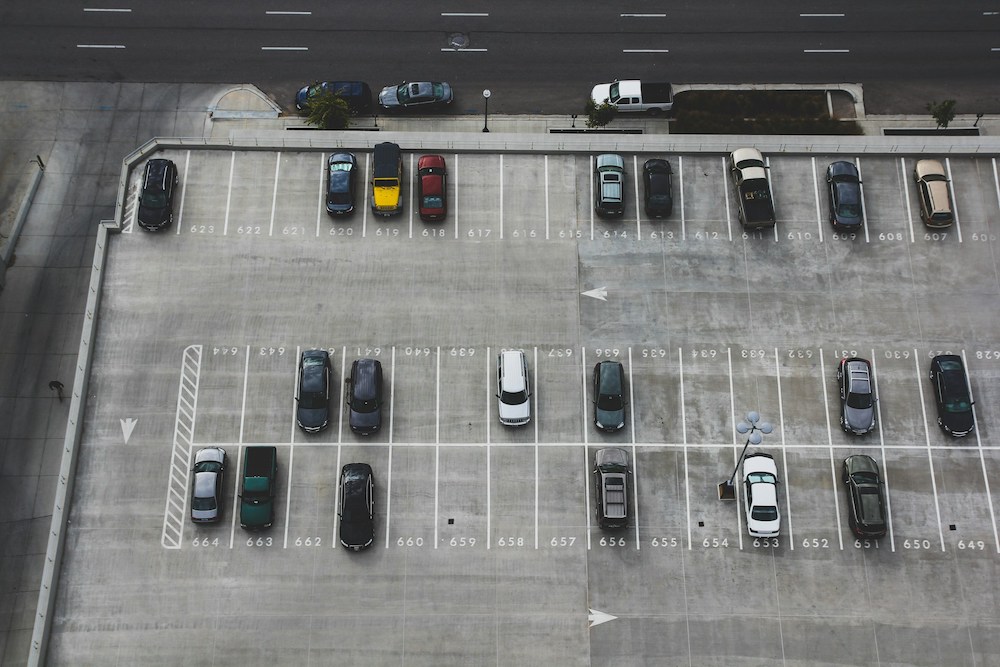Why Parking Lot Safety Matters
Parking lots are often overlooked when it comes to safety planning, but they play a critical role in protecting people and property. Unlike controlled roadways, parking lots combine moving vehicles, pedestrians, and often limited visibility in one space. This mix creates risks for accidents, injuries, and property damage if safety measures are not in place.
Businesses and property owners are responsible for maintaining safe parking areas that reduce hazards. Properly designed and well-maintained lots not only protect visitors but also project a professional image and reduce liability risks.
Common Safety Challenges in Parking Lots
Parking lots face several safety challenges. Poor lighting creates blind spots and makes pedestrians vulnerable. Faded or unclear striping can confuse drivers about where to park or how to navigate lanes. Potholes and surface damage not only affect vehicles but also pose trip hazards for pedestrians. Inadequate signage can increase the likelihood of collisions or wrong-way driving.
High-traffic lots, such as those at retail centers or medical facilities, face even greater risks. Drivers in a hurry, distracted pedestrians, and delivery vehicles sharing the same space amplify the need for safety measures.
Strategies to Improve Parking Lot Safety
Improving parking lot safety requires a combination of planning, design, and maintenance. Clear striping and signage help guide drivers and reduce confusion. Regular resurfacing and pothole repair maintain smooth, hazard-free surfaces. Installing speed bumps and traffic-calming features keeps vehicles moving at safe speeds.
Lighting is another critical factor. Bright, well-placed lights improve visibility for both drivers and pedestrians, reducing the risk of accidents and improving security. Landscaping should also be maintained to ensure shrubs and trees do not block sightlines.
For larger properties, creating designated pedestrian walkways with clear markings offers additional protection. Emergency access lanes should always remain open and unobstructed.
The Role of Professional Contractors
Working with an experienced asphalt and concrete contractor ensures that safety improvements are properly designed and built to last. Professionals can evaluate the condition of your lot, recommend upgrades, and handle everything from striping to resurfacing. A well-planned project not only reduces risks but also extends the life of your pavement, saving money long term.
More Than Just a Maintenance Task
Parking lot safety is more than just a maintenance task—it’s a commitment to protecting the people who use your property every day. By addressing common hazards, improving visibility, and working with qualified professionals, businesses and property owners can create safer, more efficient parking environments. A safe lot not only minimizes liability but also leaves a positive impression on visitors, employees, and customers.
FAQs about Parking Lot Safety
What are the most common causes of parking lot accidents?
Accidents often occur due to poor visibility, unclear striping, distracted driving, and pedestrians crossing without marked walkways.
How often should parking lot striping be refreshed?
Striping typically needs to be redone every one to two years, depending on traffic volume and weather conditions.
Do speed bumps really make lots safer?
Yes. Speed bumps and humps slow vehicles in high-traffic areas, reducing the risk of collisions and pedestrian accidents.
Why is lighting so important in parking lots?
Good lighting improves visibility, deters crime, and reduces the likelihood of vehicle and pedestrian accidents.
How can resurfacing improve safety?
Resurfacing eliminates potholes, cracks, and uneven areas that pose risks for drivers and pedestrians.
What role does signage play in parking lot safety?
Clear signage directs traffic flow, marks pedestrian crossings, and helps drivers navigate safely through the lot.
When should a business consider a safety inspection of its lot?
Lots should be inspected at least annually or after major storms to identify surface damage, fading striping, or lighting issues.
